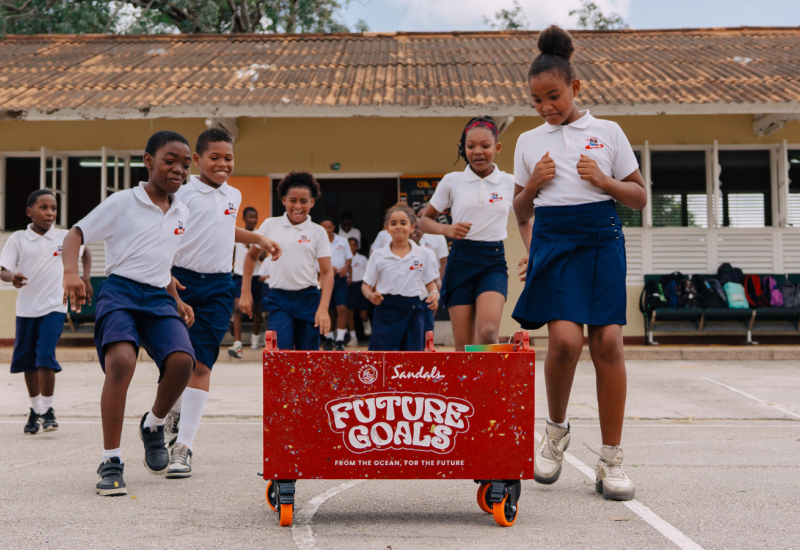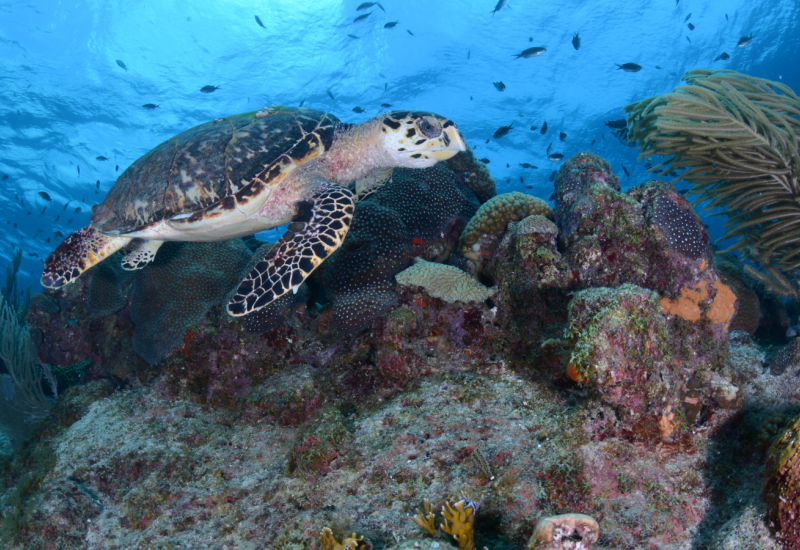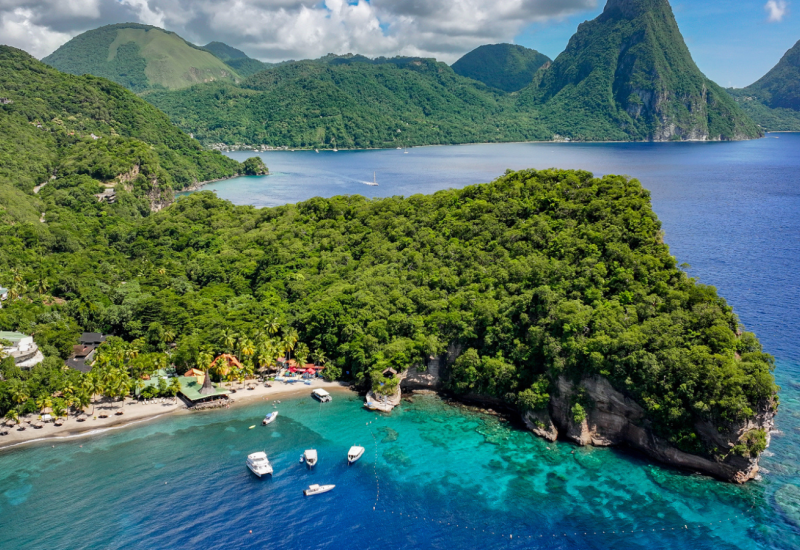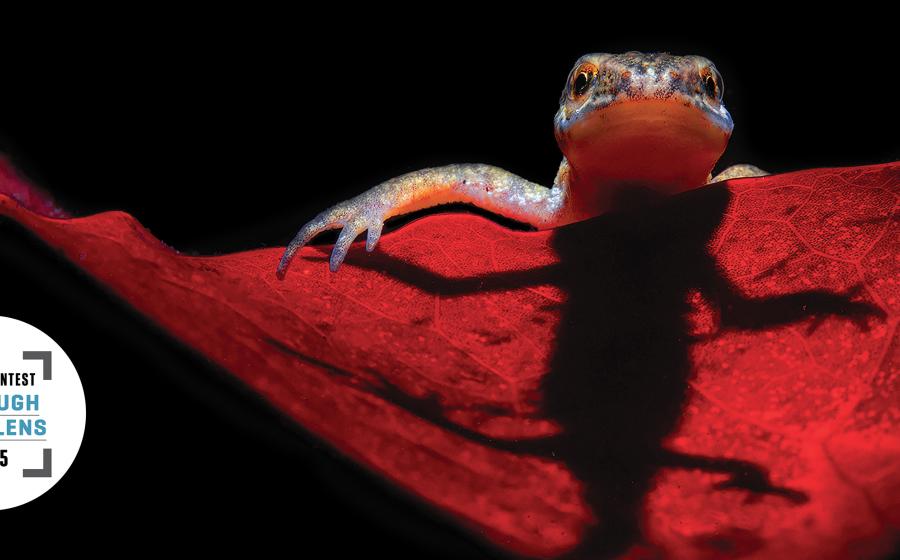30 Iconic Places to Dive in 2024
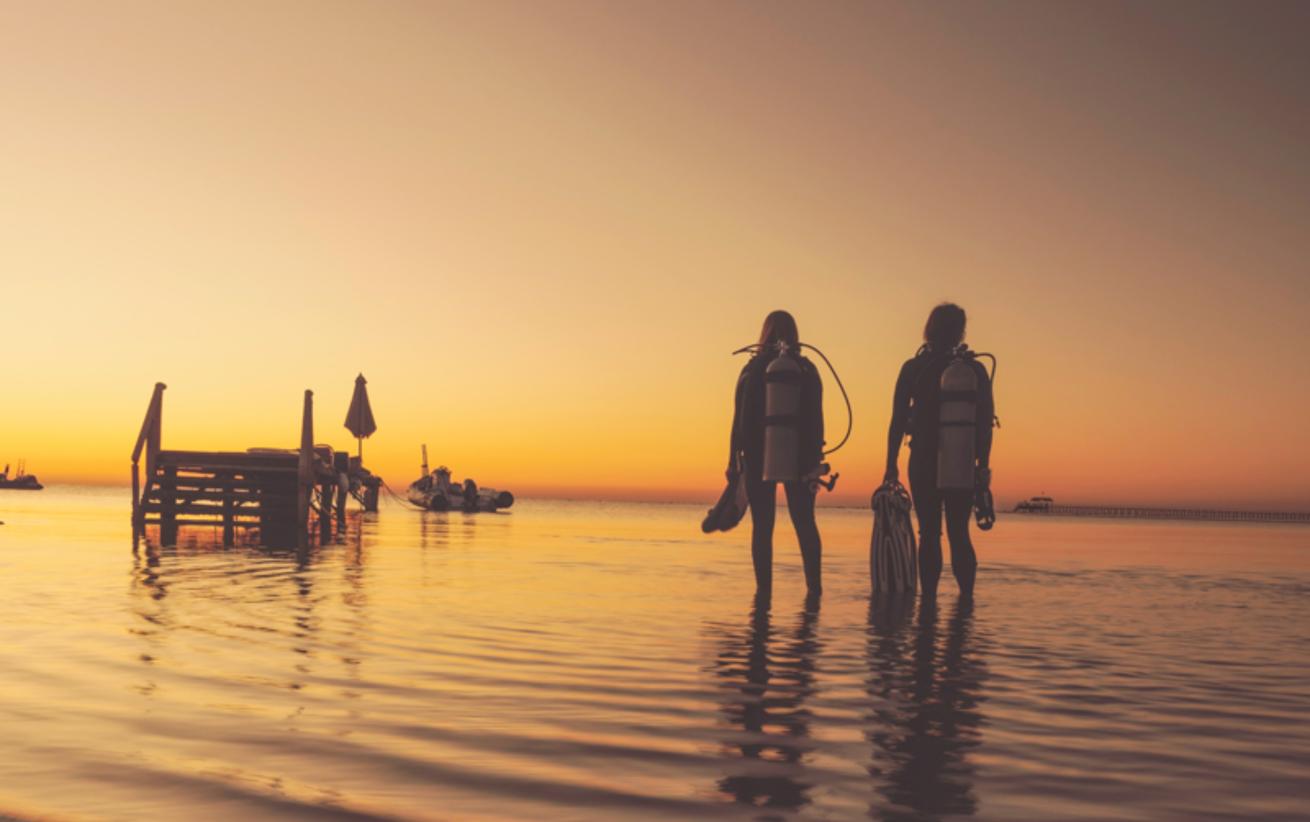
PADIDivers give back while visiting eco-diving resort Red Sea Diving Safari.
If revenge travel has taught us anything, it’s that now is the time to commit to those big adventures we have always promised ourselves but somehow never blocked out on the calendar. Some divers know immediately which trip sits on the top of their list. For others, a little inspiration is needed.
Use this guide to choose your next life-changing dive vacation in 2024. Whether you decide to join manta research efforts, witness coral reef reproduction or have epic encounters with historic wrecks or unique animals, these experiences are bound to change how you view diving—and maybe even how you view life itself.
JUMP TO
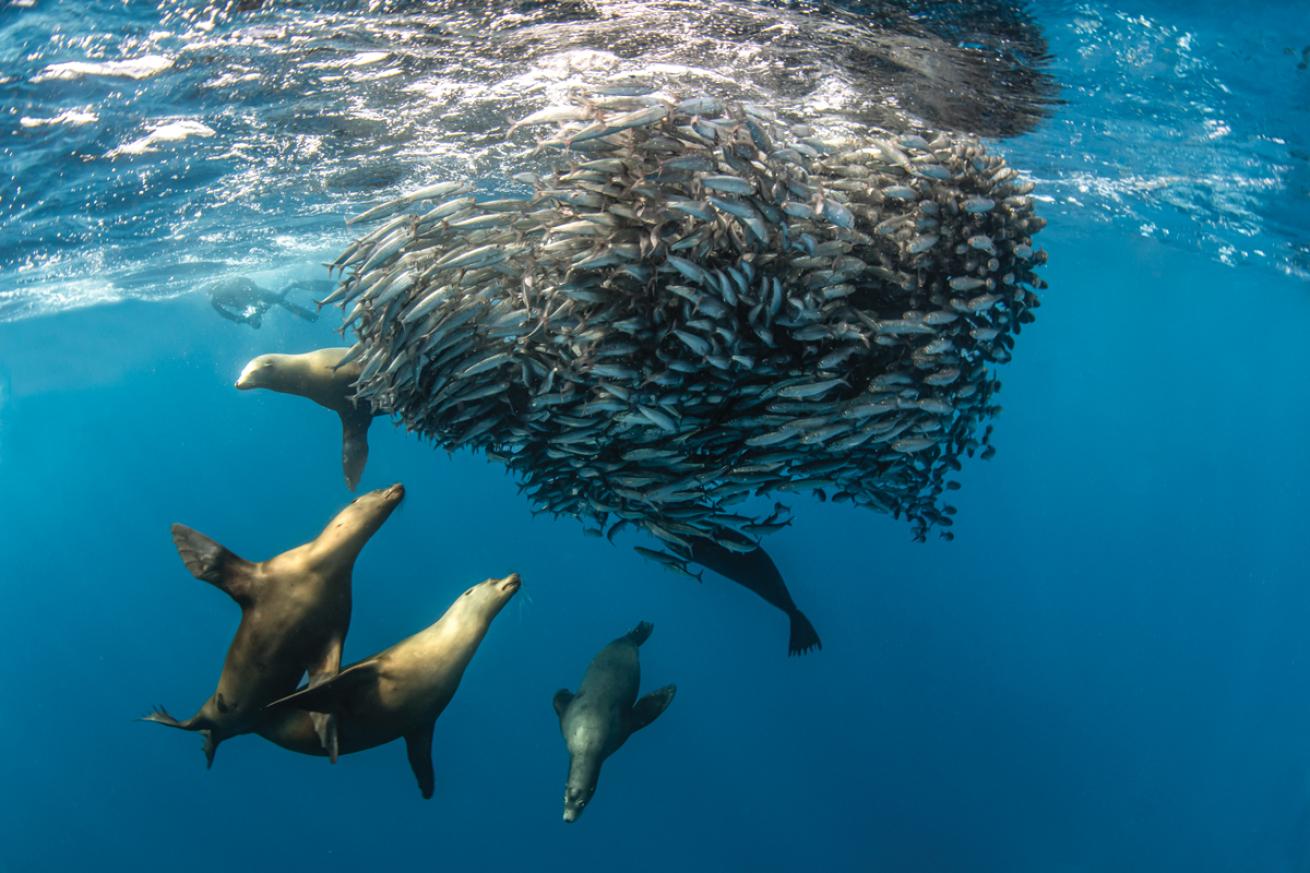
Tanya BurnettCalifornia sea lions round up a baitball of sardines off Baja’s Magdalena Bay.
Baja California Sur, Mexico
Marlin and sea lions hunt cooperatively in one of the world’s greatest displays of speed and beauty, just 5 to 30 miles offshore Bahia Magdalena on Mexico’s Baja Peninsula.
Sea gulls nipping at the surface are a telltale sign that a baitball lies below. But what happens next depends on the expertise of the dive operator.
Jay Clue, founder of Dive Ninja Expeditions, a PADI Five Star IDC Dive Center in Cabo San Lucas, has been leading and organizing five-day safari-like trips to the action for the past seven years. His crew understands the movements of the animals and the rules of engagement, such as refraining from jutting your GoPro-toting arm into the baitball, which will trigger the marlin to retreat.
Instead, letting the action flow to you works best. “The marlin will sometimes use you as a barrier, pushing sardines toward you,” Clue says.
The sight of the world’s third-fastest fish powering toward you at full speed sounds frightening, but the fish is in control. “They are insanely quick and agile,” says Clue. “They will come straight toward you and then turn 180 degrees on a dime.”
Fear subsides and awe sets in as, sometimes for hours, one shares the Pacific with these apex predators as they devour the sardines until there’s nothing left.
Contact: diveninjaexpeditions.com
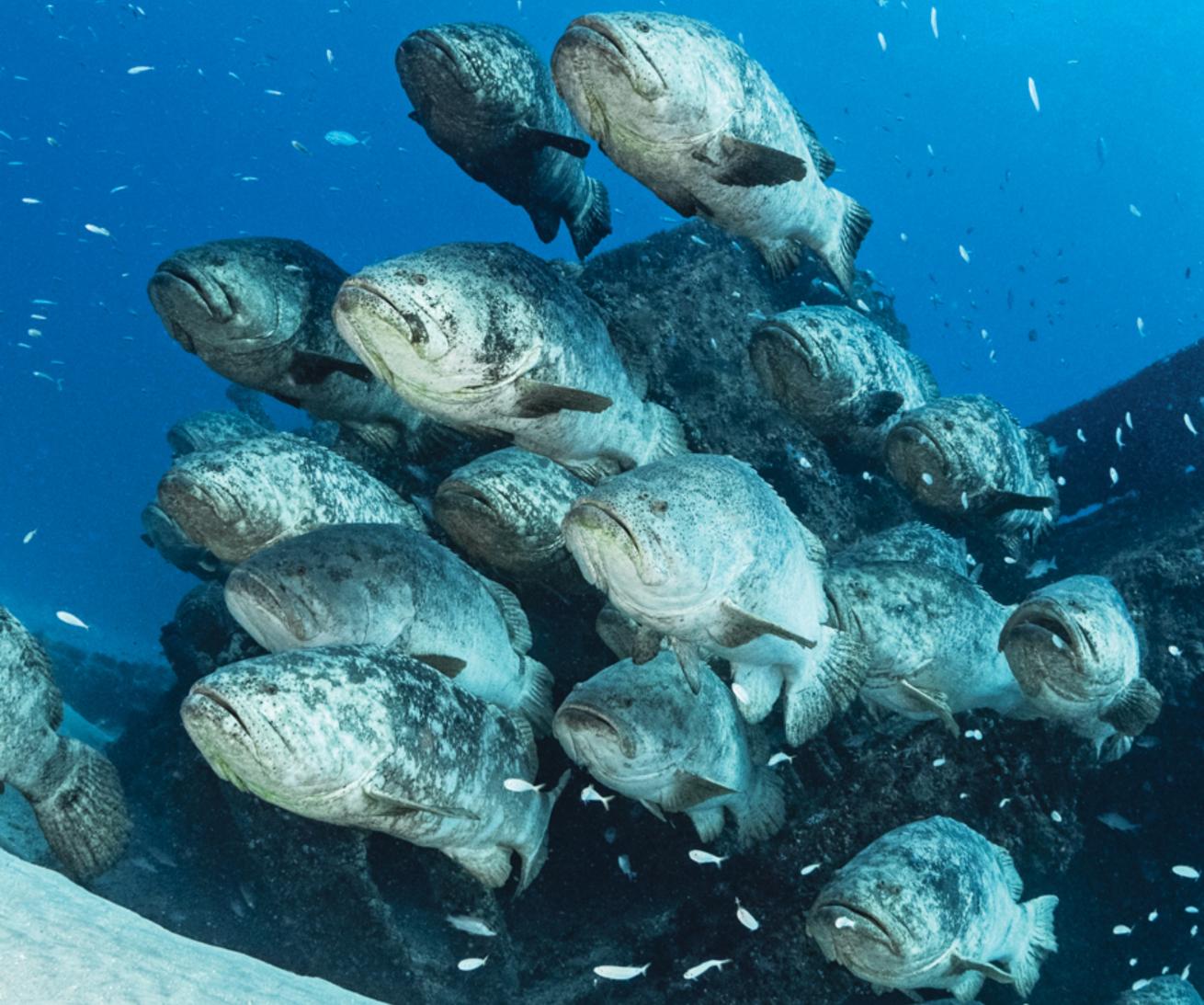
Brandon ColeA spawning aggregation of goliath grouper converges on South Florida’s Zion Train wreck.
South Florida
Ripping currents at the height of summer require precisely timed hot drops if one wants to land on one of the wrecks off Florida’s Atlantic coast.
But the intrigue of these sites goes beyond the wrecks, which happen to be the favored spawning grounds for goliath grouper mid-July through mid-August.
Time it right and be surrounded by what looks like a congregation of blimps, with each weighing up to 800 pounds.
Last year, divemaster Ambar Witter, with Pura Vida Divers, dropped in on 40 some goliaths on the wreck of the Ana Cecilia, located a mile off the city of Riviera Beach.
“I screamed in my regulator,” she says. “The sheer volume of these big fish was just incredible.”
More than that, what’s amazing about this event is that the fish are unmoved by divers’ presence. Literally.
“They couldn’t care less if you were there,” she says.
This allows for longer, closer encounters and unparalleled photo ops—that is, if you’re comfortable and experienced enough to handle current.
“It’s a challenge to understand how this kind of drift dive works,” says Witter. “You have to know how to shield yourself from the current.”
The sweet spot is to face into the current and kick just enough to stay put.
Get into the groove and it’s a dive you’ll never forget.
“When people come up from the dive, they say they have never seen more grouper in their life,” says Witter.
Contact: puravidadivers.com
More Aggregations
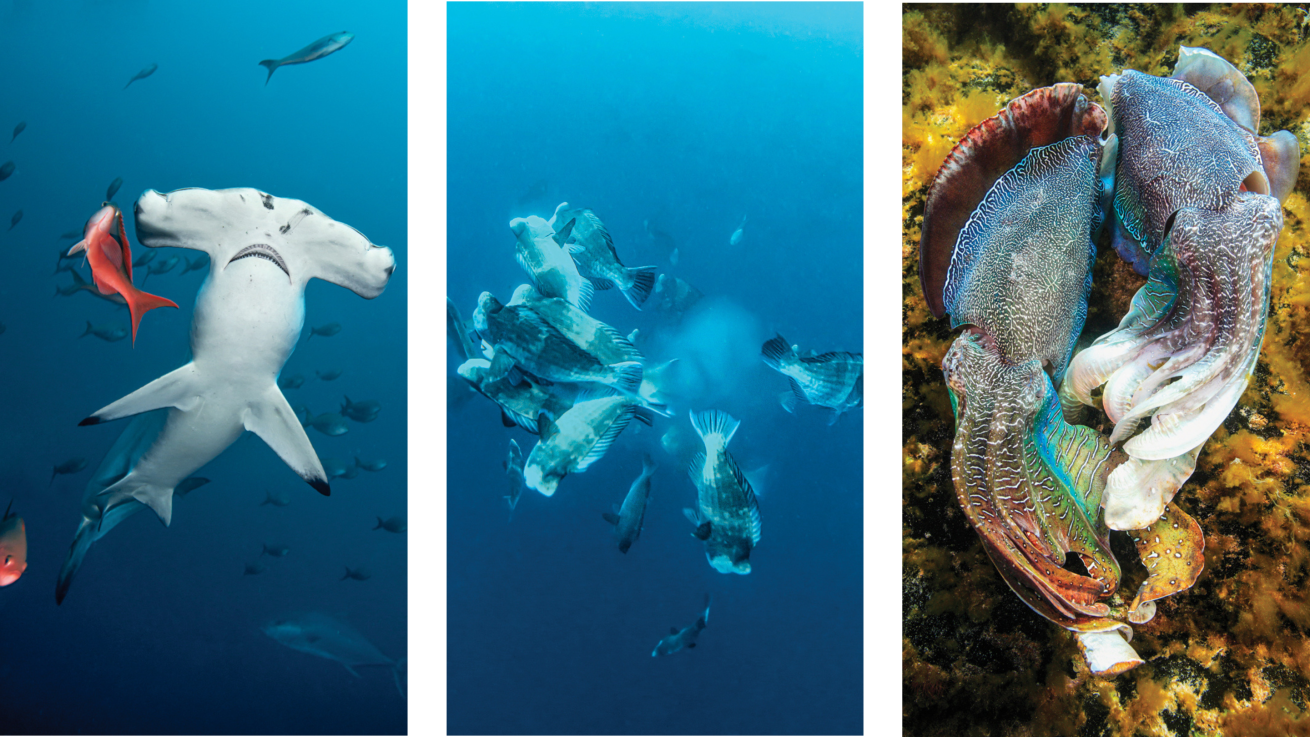
Tanya Burnett; Stephen Wong; Brandon ColeFrom left: A school of hammerheads, bumphead parrotfish spawning and cuttlefish mating.
Dive Palau aboard Palau Aggressor II or Rock Islands Aggressor and drop in right next to the spawning of bumphead parrotfish, occurring monthly around the new moon. »aggressor.com
Late May through July, giant Australian cuttlefish mate in the seaside town of Whyalla, a four-hour drive west of Adelaide, Australia. »whyalladivingservices .com.au
Costa Rica’s Cocos Island forms one corner of the Golden Triangle, where scalloped hammerheads gather in schools of up to 70. »aggressor.com
Wrecks
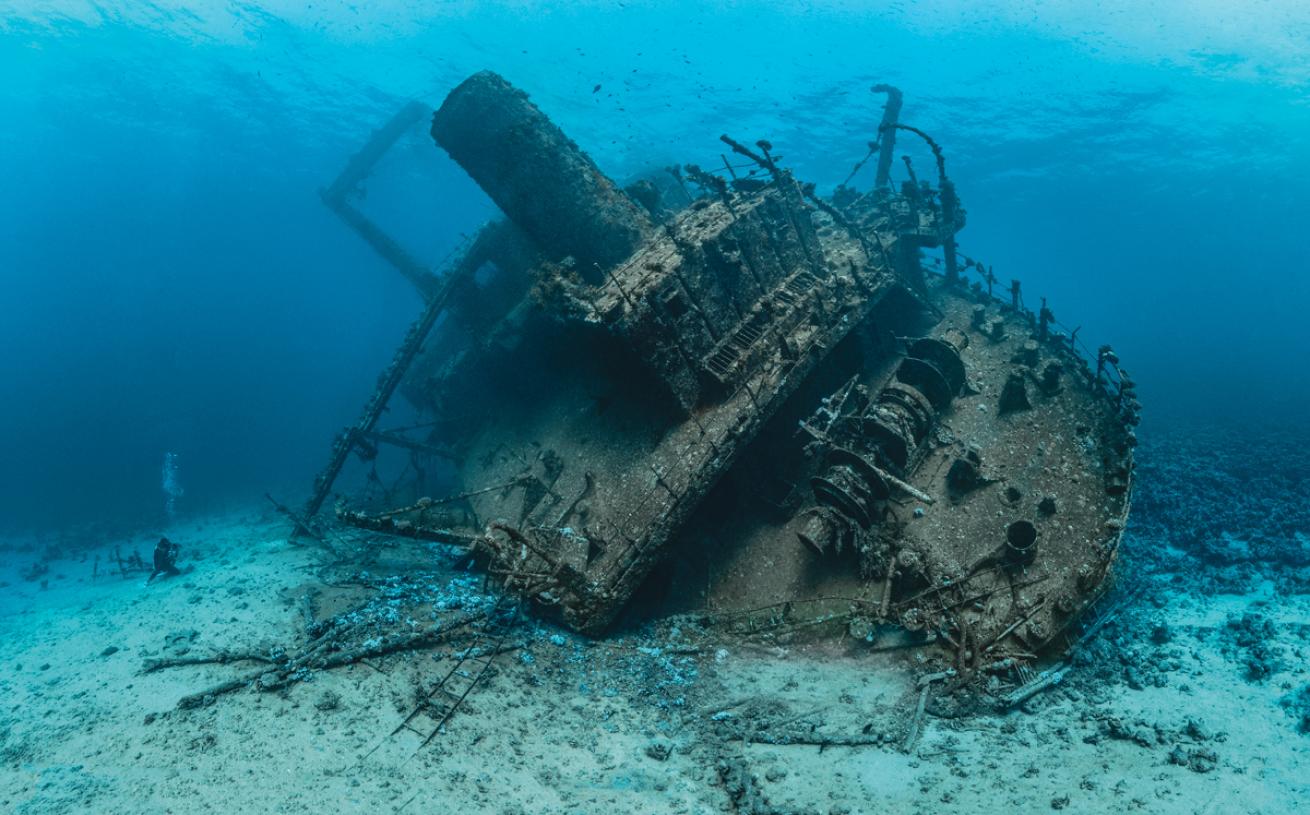
Tobias FriedrichThe Giannis D rests on the seafloor at an intriguing 45-degree angle
Red Sea
Dive travel guides often cite Thistlegorm as the “must dive” Red Sea wreck—and it’s surely not to be missed.
But ask veteran Red Sea dive guide Zoe El Beialy, instructor aboard the Red Sea Aggressor II liveaboard, and she’ll name the Giannis D as her favorite. Impressive in size at 326 feet long, the wreck is most memorable for its 45-degree angle tilt, and for tight corridors that make it a rewarding challenge for experienced wreck divers. “People find it mesmerizing as it’s a feeling they have never had before,” says El Beialy.
Related Reading: Delve Into Tec Diving on a Red Sea Vacation
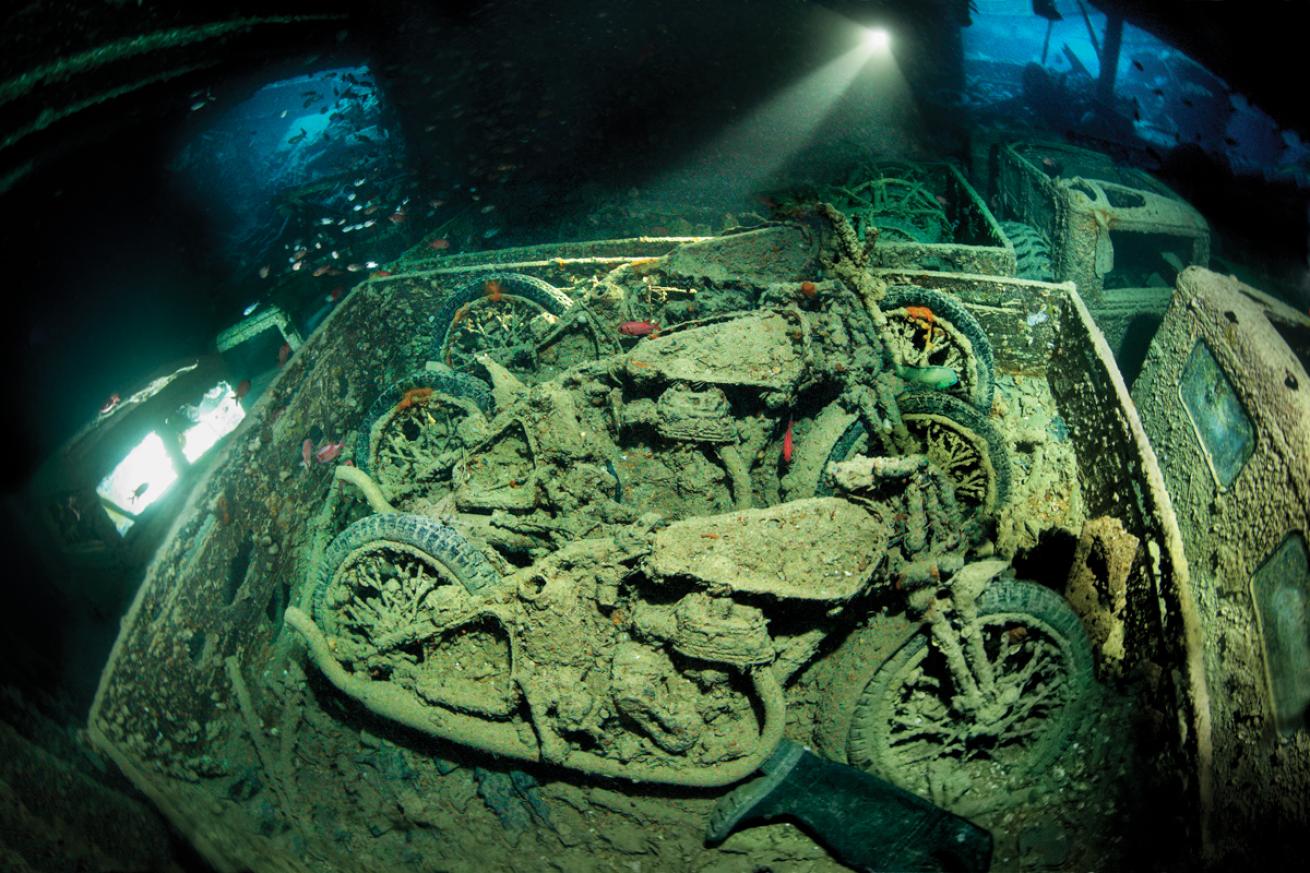
Tobias FriedrichWorld War II-era military equipment is preserved aboard the Thistlegorm.
The other big highlight of the attraction is the engine room. “Even hardcore wreck divers love the ship because the engine is intact,” she says, adding that the Giannis D is one of only a few Red Sea wrecks to still contain this prize feature.
The Thistlegorm engine was decimated when the ship sank and isn’t part of the tour, but the real highlights at this iconic site are the rooms upon rooms of wartime cargo, from Bedford trucks and motorcycles to Enfield rifles in racks and tires and rubber boots in crates. The experience is unforgettable, made even more memorable if done as a night dive, which liveaboards such as Red Sea Aggressor II can offer.
Contact: aggressor.com

Olga TorreyA diver hovers above the wreck of the USCGC Duane, purpose-sunk off Key Largo in 1987
Florida Keys
In the Florida Keys, dive a wreck like the Spiegel Grove, a U.S. Navy Thomaston-class dock landing ship with a deck at 100 feet, and you have to be prudent with bottom time.
Dan Dawson, owner of Horizon Divers in Key Largo, suggests hiring a private guide. First-time visitors to the Keys may not know that many dive operators don’t put a divemaster in the water with guests. It’s up to buddy pairs to plan their own dive. “Your experience will be very different when you are shown all the highlights,” Dawson says.
A guide also removes the stress of navigation. The massive Spiegel Grove has seven mooring lines. It’s easy to burn through air trying to remember which one has your ride floating at the other end.
Navigation aside, guides dive straight lines to all the highlights, including the machine shop, still home to a drill press and a machine lathe.
“If you don’t know where it is, you’ll miss it,” says Dawson.
Same goes for the galley, with its sinks, ovens and dishwashers, all visible from specific points on the exteriors, no penetration required.
These are the wow moments. It’s in these spots that the importance, scale and history of the Spiegel can most be felt. “I’m always just in awe that these giant pieces of machinery are still here in the wreck,” says Dawson.
Contact: horizondivers.com
More Wrecks
The Republic of Vanuatu’s Espiritu Santo island is home to the SS President Coolidge, a ship notable for having two lives, first as a passenger ship and then a wartime vessel. It still contains posh decor and furniture, set in contrast to the military supplies and equipment still on board.
Contact: aoreadventures.com
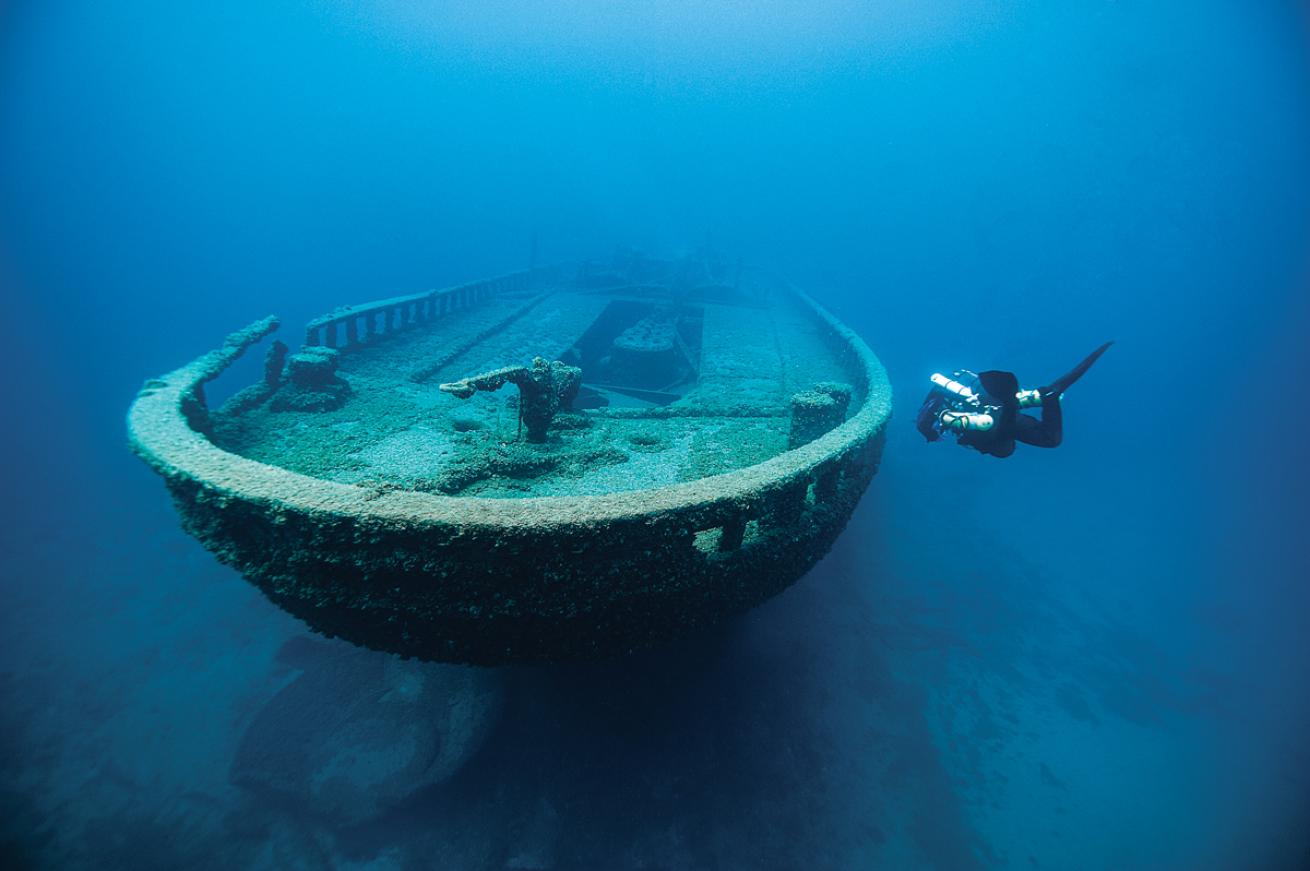
Becky Kagan SchottThe Grecian, Lake Huron.
The Great Lakes’ cold water is bracing, but it’s also the secret to preserving wooden shipwrecks. Find clusters of historic wrecks in a handful of areas, including Tobermory on the Canadian side of Lake Huron; Thunder Bay National Marine Sanctuary on Michigan’s coast; and Grand Island in Lake Superior, just off the city of Munising on the Upper Peninsula.
Contact: thundercountrydiving.net
Stuart Cove’s Dive Bahamas on the island of Nassau offers a sunken fleet of 39 ships, including the new addition of a 200-foot freighter. The divable lineup also includes the Ray of Hope at about 50 feet deep, as well as the coral-covered Willaurie at roughly the same depth.
Contact: stuartcove.com
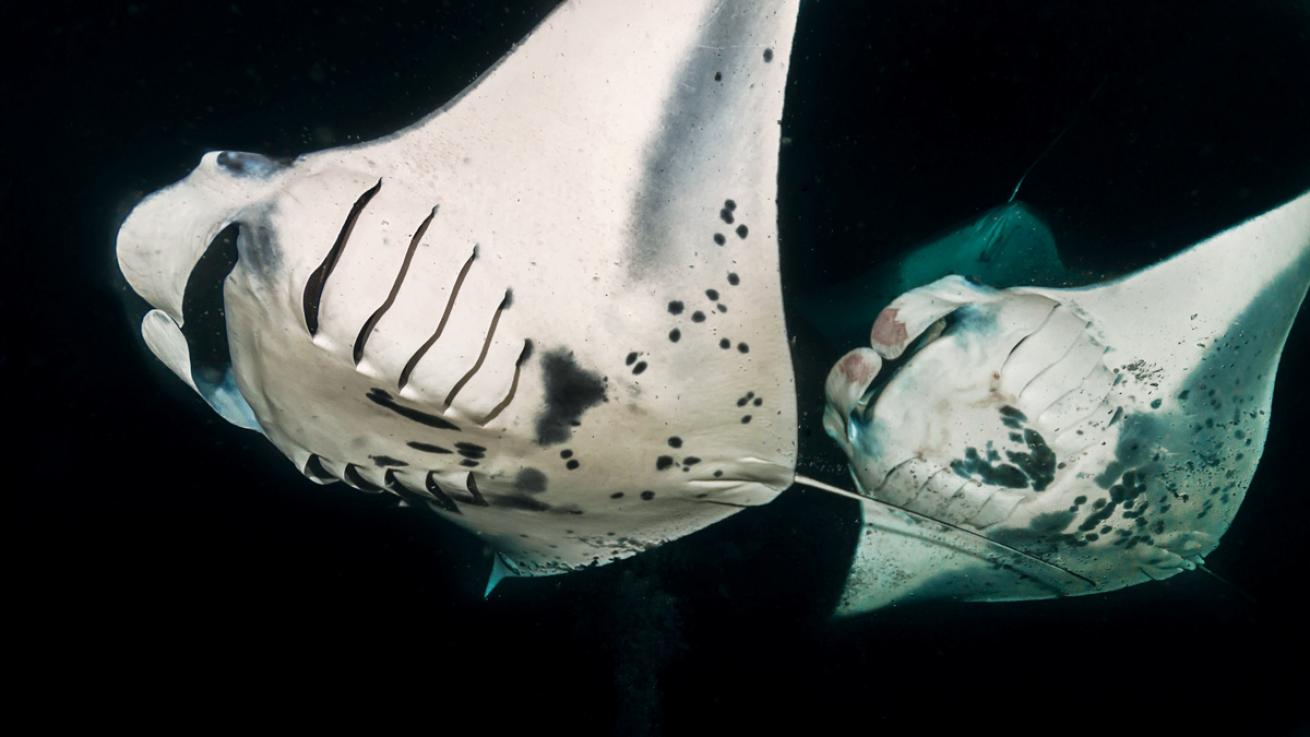
Bruce SchaferDiving at night with the mantas off Kona is an unforgettable experience
Hawaii
The Big Island of Hawaii is arguably the best destination for diving with manta rays, not just because of the nearly surefire odds of encounters during the famous night dives and snorkels, but also because local researchers have been identifying individuals for more than 30 years. This means that post-dive, the group learns about the history and travel patterns of the actual mantas they just swam with.
Back when Keller Laros, founder of the Manta Pacific Research Foundation, first started photographing local mantas in 1991, he organized his encounters by gluing photos into a scrapbook.
Today, more than 300 individuals have been identified in the Manta Ray Tracker app, available to anyone with a smartphone.
Big Bertha was one of the first Laros identified, and she is still regularly spotted on research and recreational trips with PADI Five Star IDC Resort Jack’s Diving Locker.
Kona is also a manta hotspot, due to its dramatic topography.
“The thing that makes Kona so unique is that its underwater shoreline is narrow before it drops off,” says Laros. “Mobula alfredi (the reef mantas) don’t like to travel over deep water, so they’re compressed into the area along the shoreline, which is also where people scuba dive.”
All of which makes for good odds on just about any dive trip.
Contact: jacksdivinglocker.com
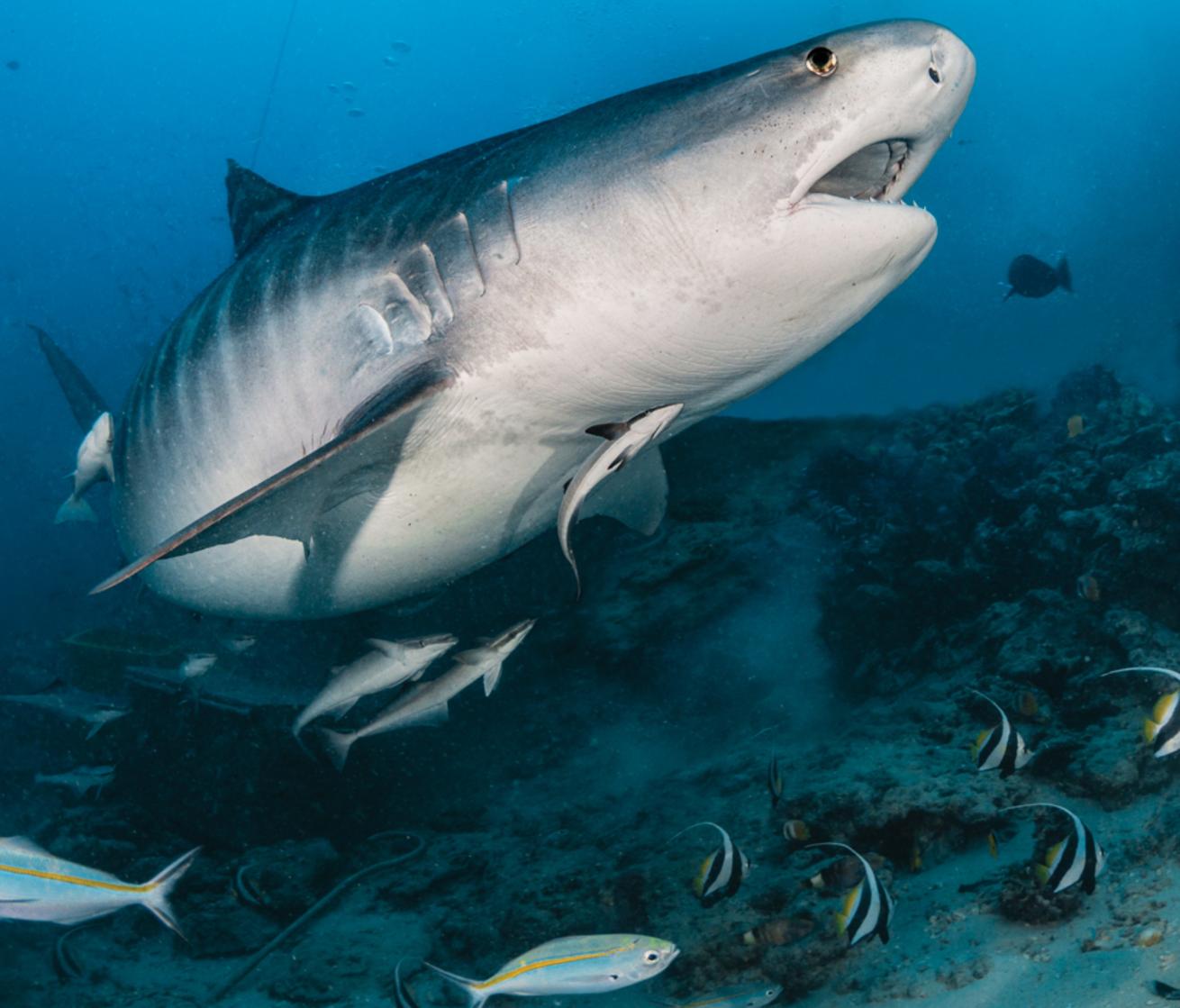
Renee CapozzolaEncounters with tiger sharks at Beqa Lagoon give divers visiting Fiji a thrill.
Fiji
Stripes set apart the shark dive at Beqa Lagoon Resort. This feeding experience, offered three times a week, draws in tiger sharks in record numbers—and with a predictability that seems unreal.
“The amount that we don’t see tigers is the amount the other guys see tigers,” says Walter Baard, general manager of the resort, adding that the chance to see these predators is around 95 percent.
The dive is highly controlled and organized, with a primary feeder offering frozen fish only to tiger sharks. In this environment, sharks make slow rounds of the arena, passing just a couple feet in front of divers lined up and kneeling in the sand behind the primary feeder.
“Everything is calm,” he says. “And yet also exhilarating.”
It’s the controlled nature of the dive that has the power to change minds.
Recently a guest visited with her family and felt pressured to join the dive. So much so that she was in tears. Brandon Paige, dive manager at the resort, sat with her and explained step by step what would happen during the feed.
“After the dive, she was so vocal about the experience that we couldn’t get her to stop talking about how cool it was,” says Baard.
Immediately, she signed up to go again.
Contact: beqalagoonresort.com
More Big Animals
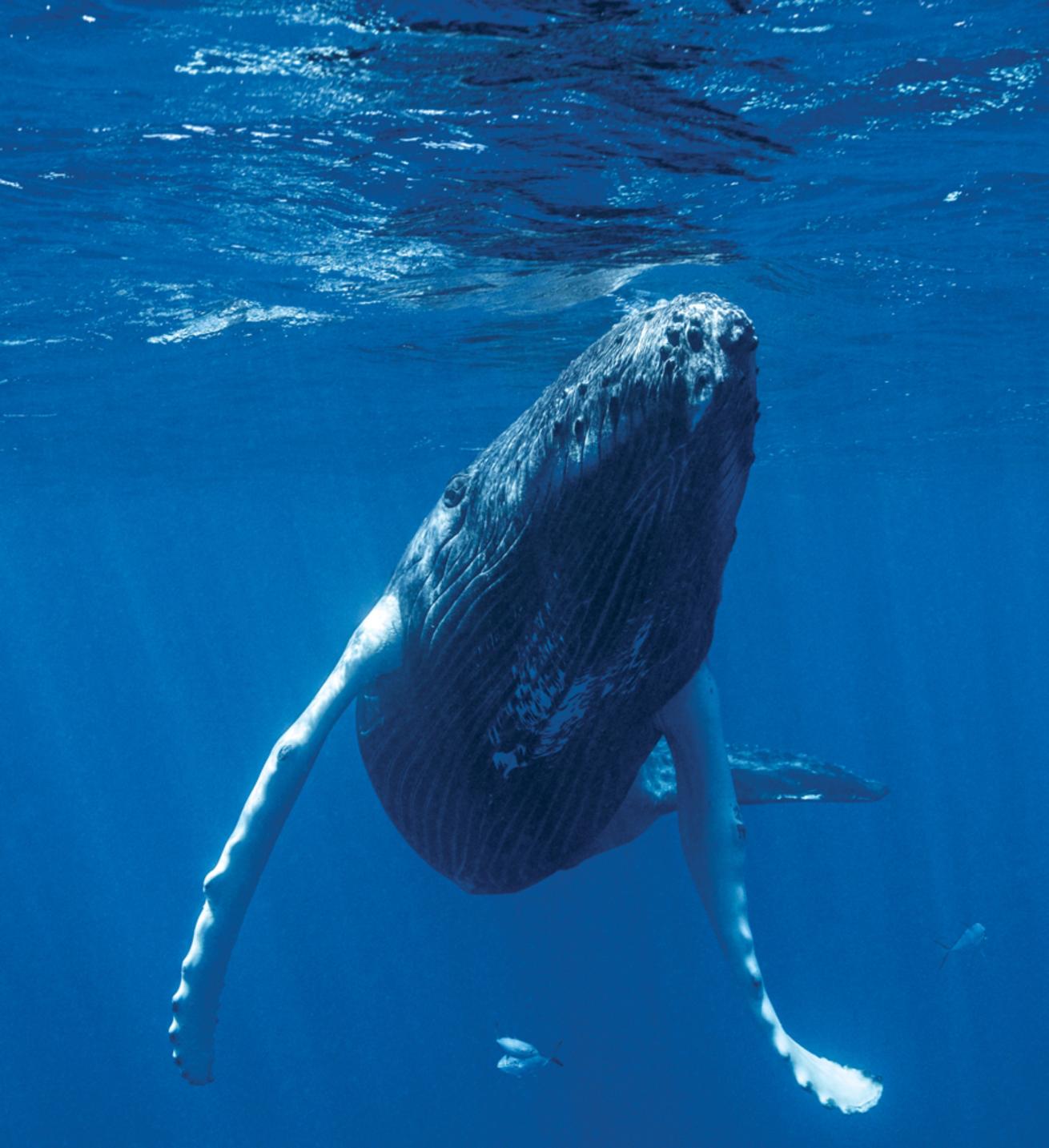
Brandon Cole
Stuart Cove’s Dive Bahamas offers sharkfeeding dives four afternoons a week. Guests spectate about 30 Caribbean reef sharks from just a few feet away. »stuartcove.com
The Scubaspa liveaboards, operating in the Maldives regularly encounter giant manta rays all year long. They also offer two dedicated manta weeks that focus on dives with mantas, as well as behavior talks with NGO guest speakers.
Contact: scubaspa.com
January to April, Turks and Caicos Aggressor II travels to the Dominican Republic’s Silver Bank for snorkeling adventures with humpback whales.
Contact: aggressor.com
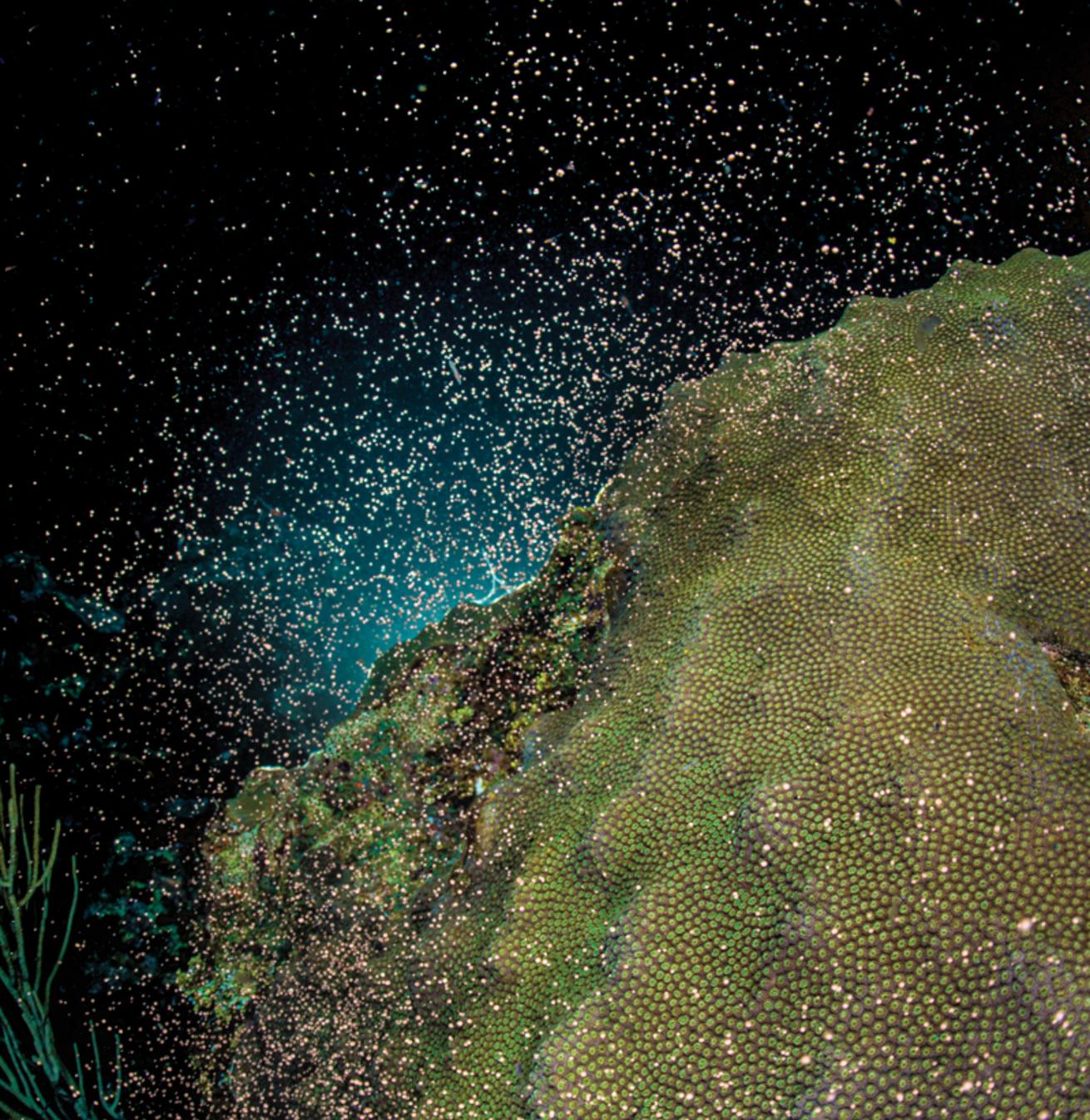
Alex MustardA mountainous star coral spawning off Grand Cayman.
Grand Cayman
When Steve Broadbelt read about coral spawning in National Geographic, he knew he had to witness the event on the reefs in front of his dive center, Ocean Frontiers, located on Grand Cayman’s East End.
A few years of trial-and error diving, and now he knows the clockwork-like schedule: Mountainous star corals spawn for several nights after the full moons of August, September and October, starting at 9 p.m. and lasting about 70 minutes.
“Suddenly, the spawning was everywhere, all around us,” says Miriame Ould Aissa, staff instructor with Ocean Frontiers.
Her group dived from coral bommie to coral bommie, watching as the next mountainous star coral started going off. Ould-Aissa advises keeping an eye on all the coral heads around you, as you could swim away from one just as it’s starting to spawn.
“When I paused to think about the fact that I am witnessing the birth of the coral reef, the idea blew my mind,” she says.
Contact: oceanfrontiers.com

Barry BrownA diver takes in the show during a boulder star coral spawning event in Bonaire.
Bonaire
Being asked to join a night dive while keeping their lights mostly off rightfully makes many divers nervous. But this is the ask of those wanting to see the underwater light show that is the ostracod mating dance.
Martin Cicilia, manager of PADI Five Star CDC Buddy Dive on Bonaire, understands divers’ apprehension because he was also nervous the first time he encountered this phenomenon, at a dive site called Karpata. “It was frightening because I didn’t know what I was seeing,” he says.
The second he shined a light on this alien glow it disappeared. “It kind of freaked me out because I thought it was my imagination.”
Now he knows exactly what it is, and where and when to see it. These lights, also sometimes called string of pearls, can be seen every night, 20 to 25 minutes after sunset. The best viewing spots are in the shallows, just 10 to 15 feet deep, and at sites away from the lights of town, the resort or the pier.
Cicilia leads these experiences as guided trips organized through Buddy Dive. “The lights look like the numbers that move down the screen in the opening of the movie The Matrix,” he says.
The lights appear slowly, starting at the bottom of the reef, and build vertically, then pulse. The whole display lasts just 20 minutes and is both otherworldly and mesmerizing. “For me, it’s the most exciting night dive,” says Cicilia.
Contact: buddydive.com
More Biological Phenomena
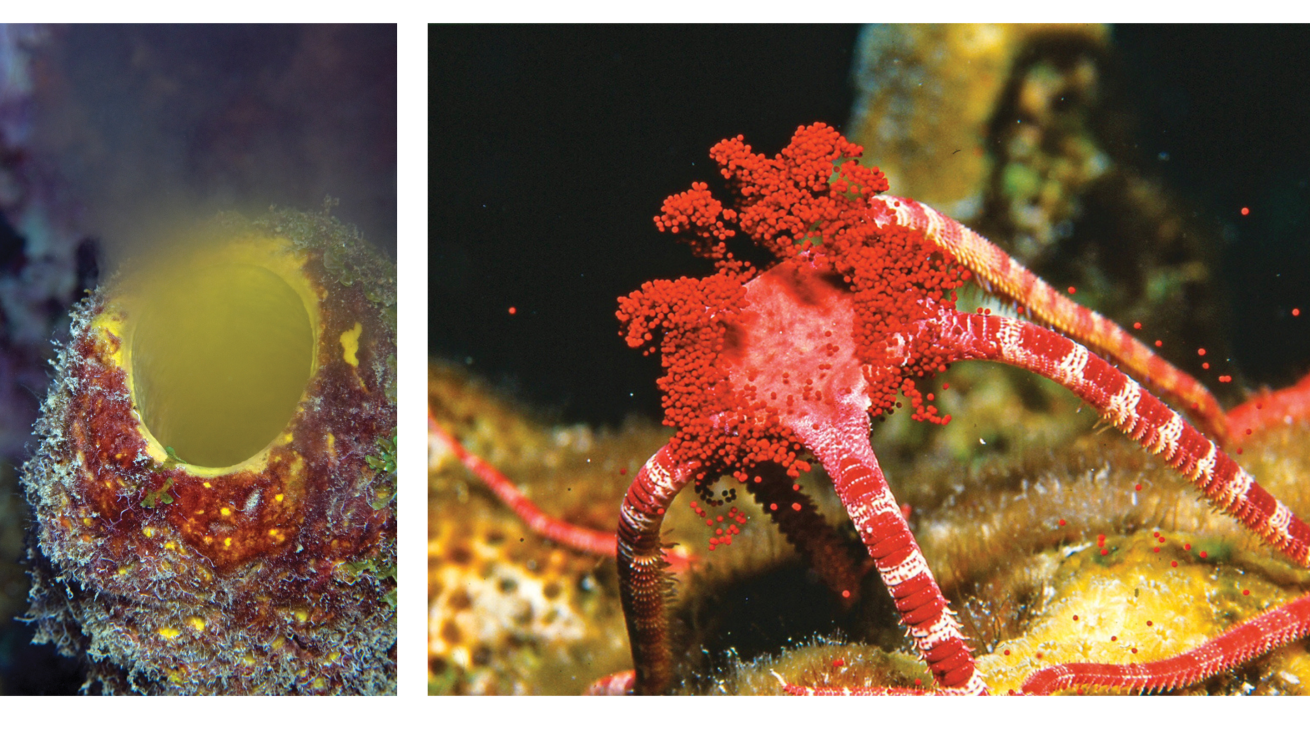
Barry Brown; Courtesy Bernd RacFrom left: A convoluted barrel sponge spawning; A ruby brittle star releases its eggs during spawning at night.
Ocean Encounters, on the Dutch Caribbean island of Curaçao, offers shore diving opportunities, starting from their beach, to witness the coral spawn.
Contact: oceanencounters.com
Anemones on the Canter bury wreck off the tip of the North Island of New Zealand spawn the day after the full moon in June or July.
Contact: divezoneboi.co.nz
Scuba St. Lucia offers coral spawn packages with Anse Chastanet resort that include accommodations, a week of diving plus coral spawn dives.
Contact: scubastlucia.com
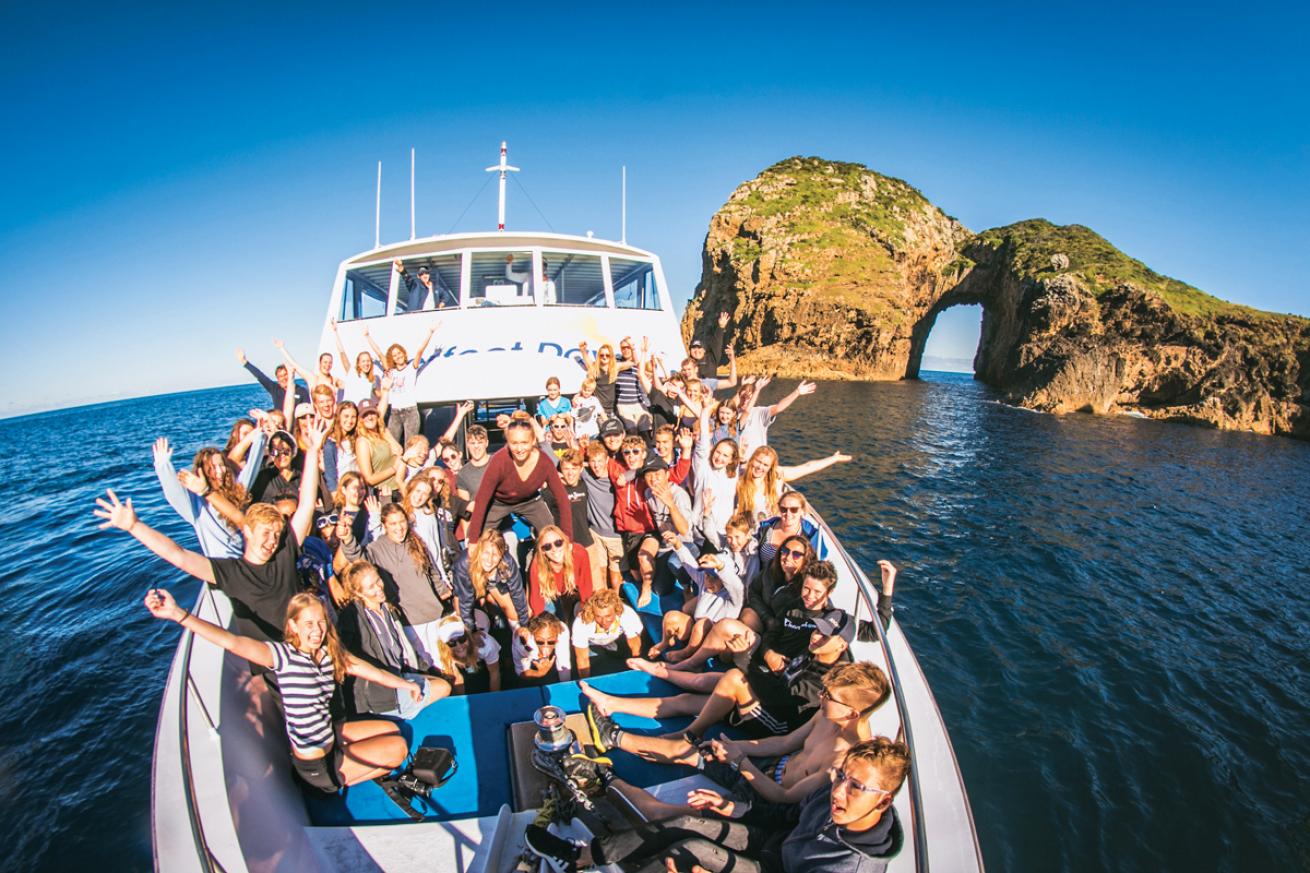
Courtesy Dive TutukakaMarine conservation is at the forefront of Dive! Tutukaka’s excursions to the Poor Knights Islands.
New Zealand
The Poor Knights Islands, about 9 miles off the Tutukaka Coast in Northland, New Zealand, have been protected as a marine park since 1981.
“These islands are known as the Galapagos of the South Pacific because of the way the currents move,” says Kate Malcolm, owner of Dive! Tutukaka, a PADI Five Star IDC Resort that runs trips to the area.
It’s a unique environment where the warm East Australian Current meets the cooler, nutrient-rich water flowing up from polar regions.
Like Ecuador’s Galapagos Islands, the Poor Knights are uninhabited and have been relatively untouched, allowing species diversity to expand unhindered.
The reefs serve as home to 125 fish species, as well as kelp, corals and a mix of additional life found nowhere else. There’s a lot to protect, which is the message that Dive! Tutukaka imparts to guests.
But the resort’s conservation message isn’t shared through lectures or presentations.
“It’s a nonstop conversation, and it’s a part of everything we do,” says Malcolm.
What most steers the dive center is a philosophy of the local Maori people: Awhi mai, awhi atu
“It translates to ‘what goes in, goes out,’” she says. “Everything centers on reciprocity. Everything is interconnected, so every action you take has an impact somewhere else. Really, it’s a way of life.”
Contact: diving.co.nz
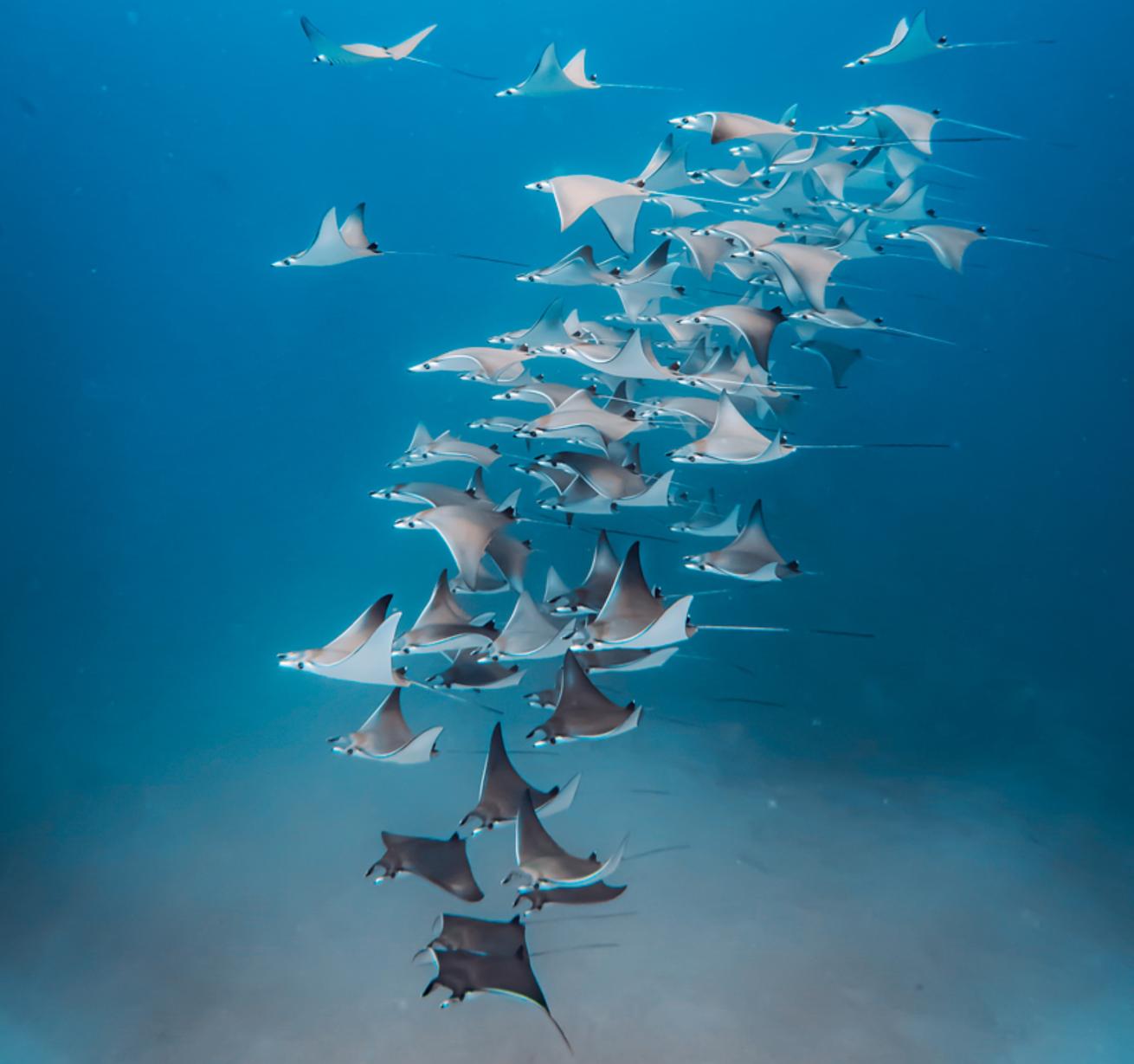
Miriam StragerDivers learn about and participate in manta conservation at Six Senses Laamu.
Maldives
At Six Senses Laamu, the philosophy is to give back to the environment more than is taken. The resort is plastic-free and works to provide water purification systems to local communities, but nowhere is the commitment more apparent than its marine biology research program, which guests are welcome to take part in.
Six Senses’ Maldives Underwater Initiative (MUI) is staffed by marine biologists and supported by three partners: the Manta Trust, Blue Marine Foundation and the Olive Ridley Project.
One of the most exciting parts for divers is not only the potential to see manta rays on every dive, but to be educated by researchers on how to identify mantas and learn about individuals’ travel patterns.
For many divers, this can be a dream come true.
Related Reading: A Diver’s Guide to the World: Exploring Above and Beneath the Surface
“We had a guest who was so head over heels with mantas,” says Miriam Staiger, Manta Trust Laamu project manager. “She really hit the jackpot as we had 11 manta rays at the cleaning station for the entire dive— she had 65 minutes of pure manta magic.”
Staiger recalls another dive with a guest who “was super good on air.” They had been at a cleaning station at 78 feet “for ages.” But this guest asked to stay a bit longer, and Staiger gave the goahead, and it was just the two of them, surrounded by mantas for 15 minutes.
Back on the boat, the guest took Staiger aside and hugged her. “She said it was the most amazing moment in her life.”
Contact: sixsenses.com
More Eco-Travel
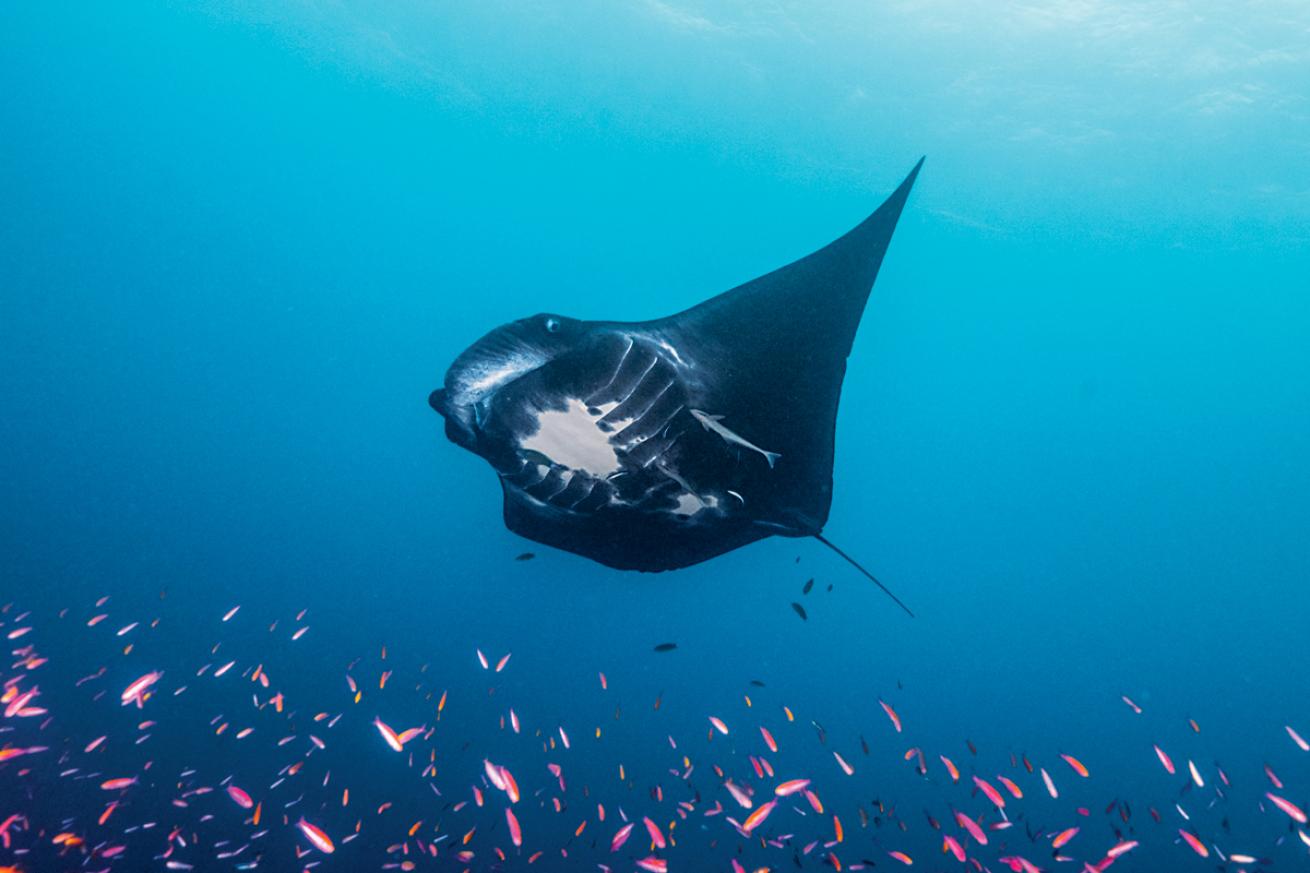
Courtesy Wakaya Resort
At Wakaya Resort in Fiji, the focus is mantas. For no cost, guests can do special dives with mantas on the house reef. The resort also maintains a big coral nursery where guests are welcome to assist.
Contact: wakayaislandresort .com
Red Sea Diving Safari, a collection of PADI Resorts in Egypt, offers what they call ecodiving, which includes green, sustainable accommodations as well as countless ways for divers to get involved and give back, including citizen science opportunities, cleanups and eco-diving workshops.
Contact: redsea-diving safari.com
The Manta Resort on Pemba Island, Tanzania, works with the nonprofit Kwanini Foundation to empower local communities through education and conservation.
Contact: themantaresort.com
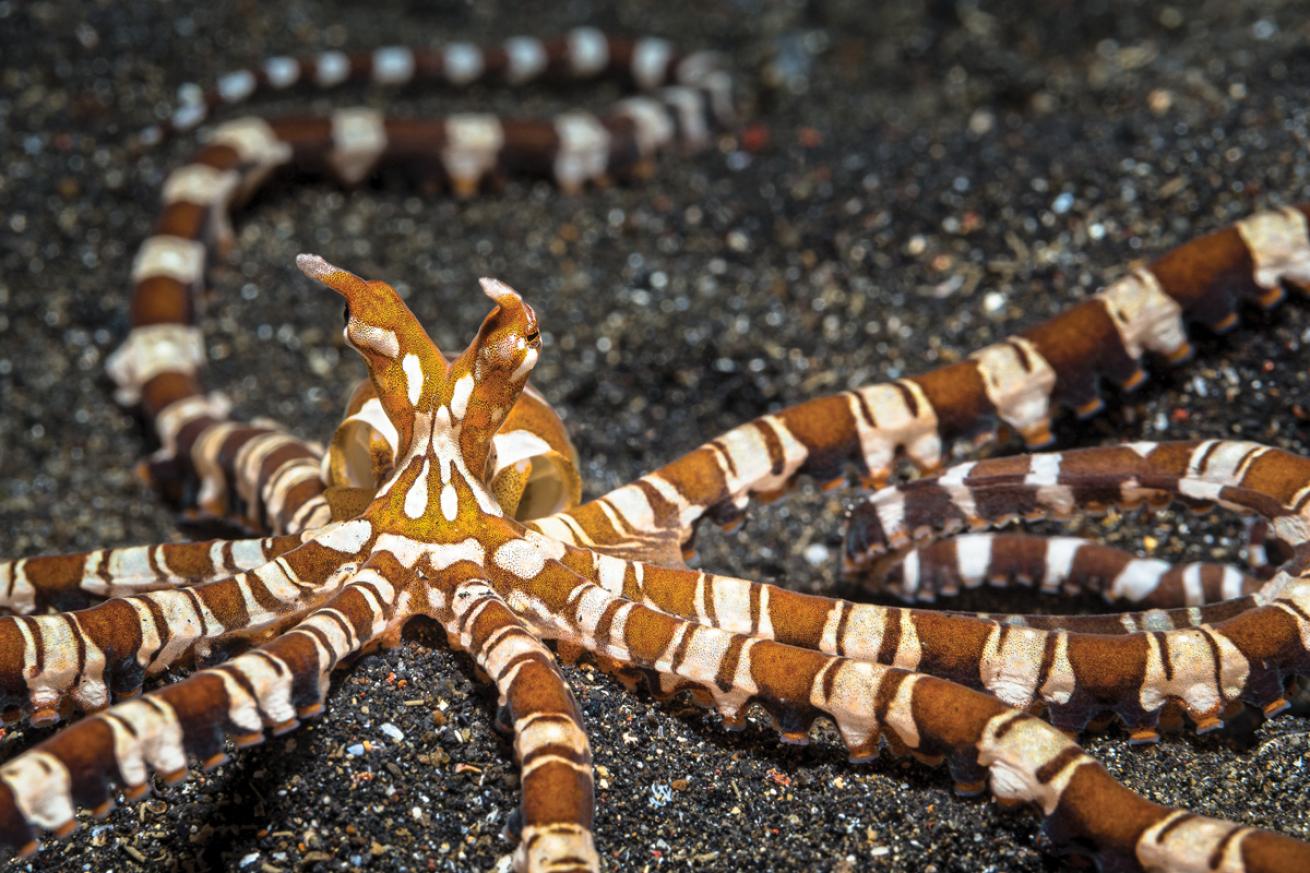
Jennifer PennerA wunderpus octopus on the black sands of Lembeh Strait, Indonesia
Indonesia
Credit Indonesia’s volcanic sand for stellar muck dives serving up a sediment and nutrient-rich environment that houses unparalleled macro species diversity. There’s such an array of tiny wonders that the same dive site when explored for a second time will yield an entirely different mix of finds.
“With muck diving, even if you’re in the same place five hours later, it’s completely new stuff that you’ll see,” says Adi Haliem, boat manager for the All Star Velocean liveaboard yacht, which travels to the Raja Ampat, Wakatobi and Komodo regions.
Of these areas, Raja Ampat offers the greatest macro diversity. “It has every kind of coral species and every kind of fish,” says Haliem.
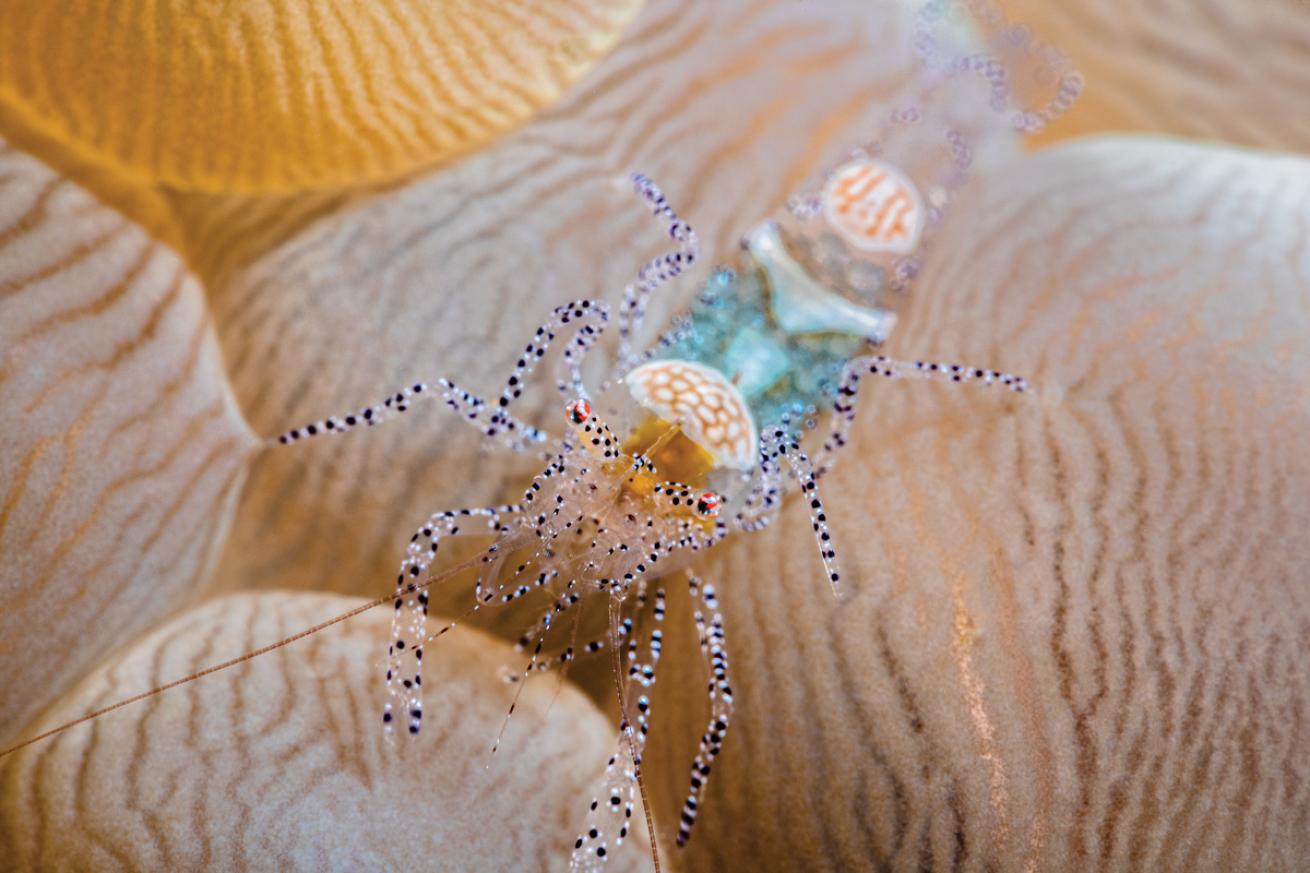
Jennifer PennerA tiny shrimp perches atop bubble coral.
In Raja, that diversity includes four species of pygmy seahorse that Haliem and his fellow guides find regularly.
Even these pinky-nail size critters are easy to find for the guides, as are most species on the wish lists that photographers ask Haliem to help them check off.
A prolific shooter himself, Haliem is hooked on the hunt. After every dive he does off the clock, he and his mates rush to the ID books to see if they’ve found an unnamed species.
Contact: allstarliveaboards.com
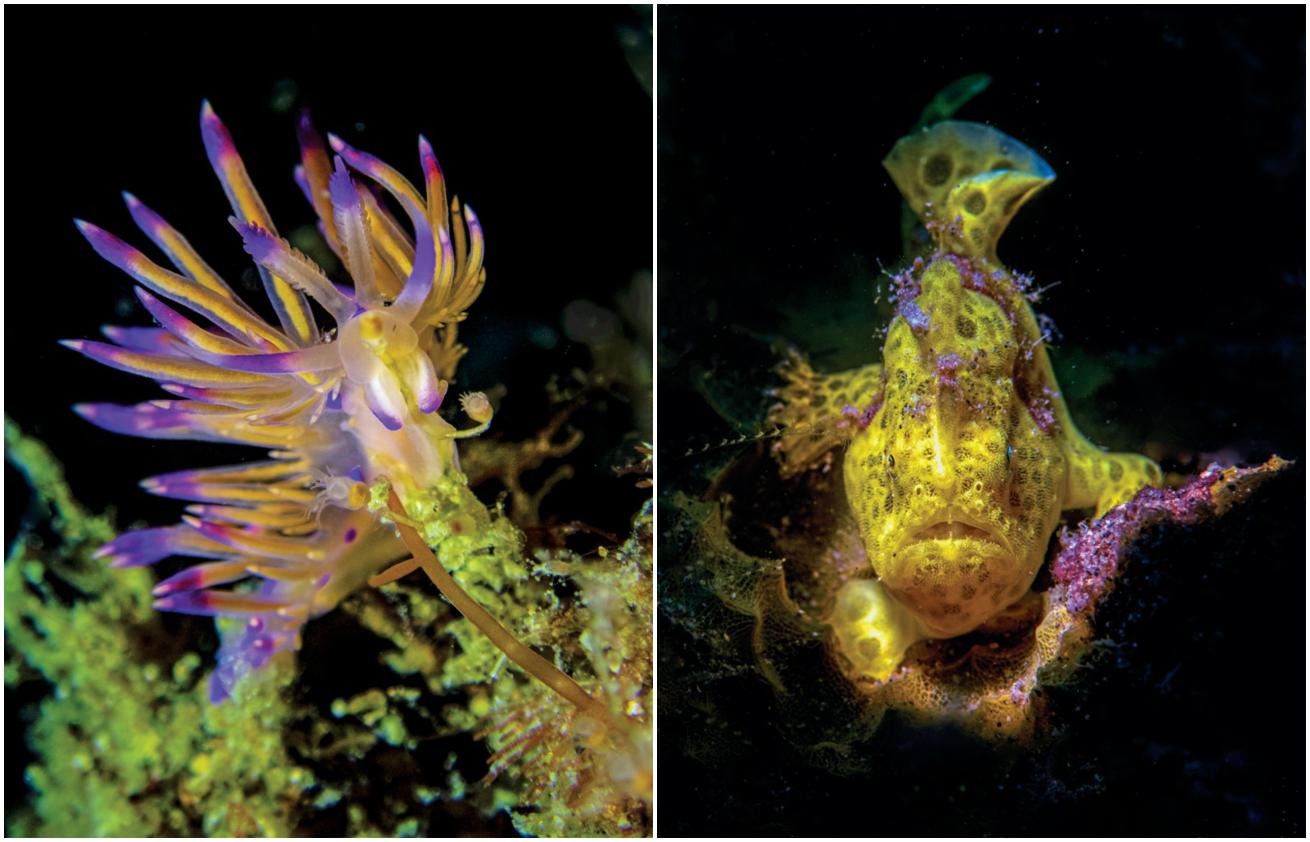
Gerald NowakFrom left: A nudibranch and a painted frogfish practice color coordination in Dauin, Philippines.
Philippines
The reefs of the Philippines seem to deliver the most when one multitasks. A narrow focus is rewarded with parades of macro life, from nudibranchs to frogfish, but it’s best to take breaks from intent reef study and peeks to the blue as the pelagics are plenty, and they move quickly.
In Tubbataha, much of what’s on offer are wall dives. “You’re drifting along looking at tuna and—oh, there’s a pygmy seahorse and a bunch of nudis, then you turn back around and there are all these sharks,” says Jeff McNutt, a captain with the Aggressor Liveaboards fleet.
Of the four itineraries that Philippines Aggressor and the newly launched Philippines Aggressor II book, the Visayas bring the biggest bounty of small stuff. Ample coastline with coves and bays provides sheltered waters where waspfish, ghost pipefish and other not-so-strong swimmers reside. This destination allows night diving; Tubbataha Reefs Natural Park does not.
But Tubbataha has thrills all day long. Dives can deliver a tornado of jacks and a baby whale shark on the same dive that one lays eyes on fire dartfish and clusters of nudibranchs, sometimes three to a frame. It’s a lot to take in, and for photographers, too much to choose between when selecting a lens. “If you can carry two cameras, that’s the best,” says McNutt.
Contact: aggressor.com
More Macro
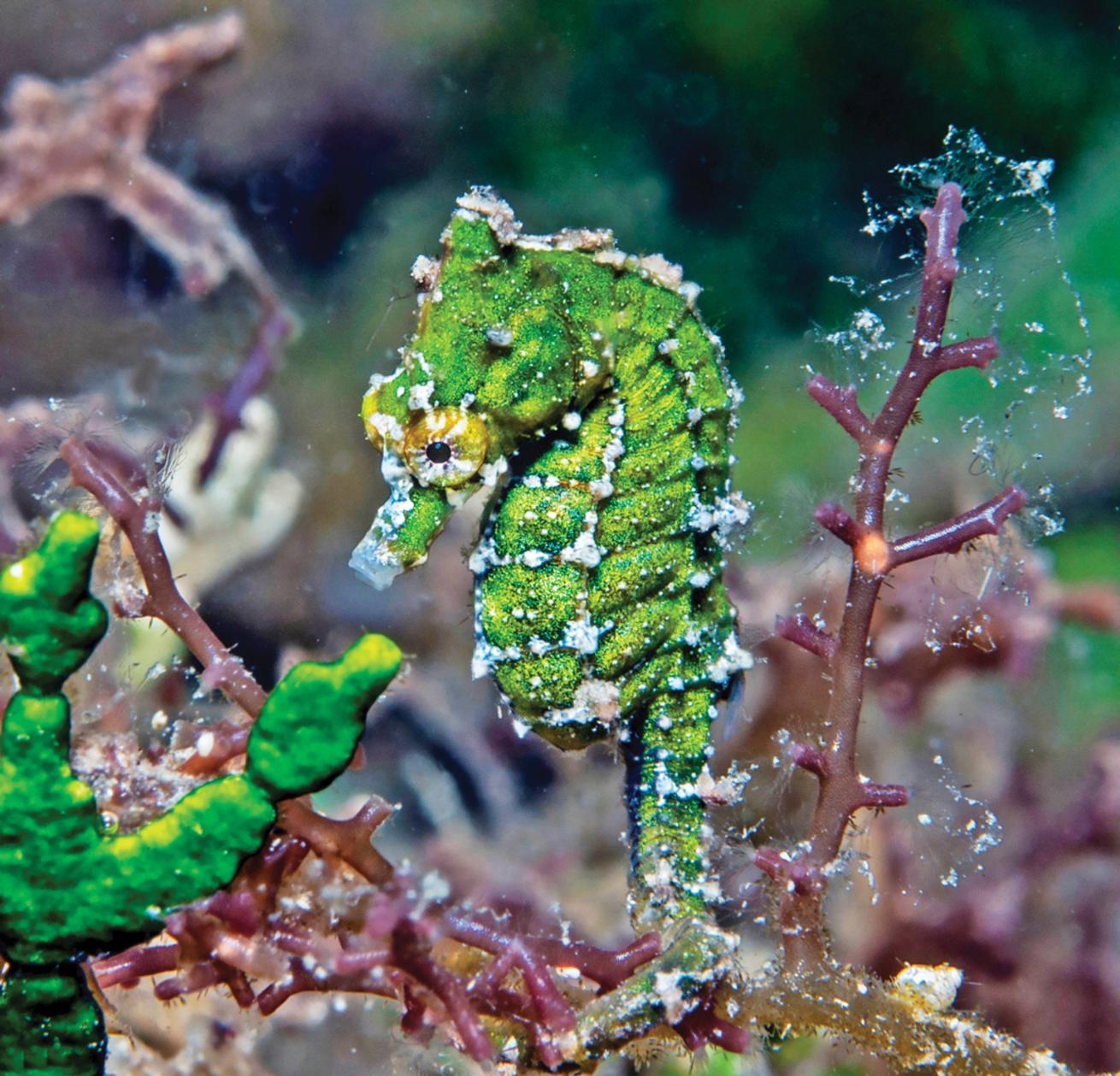
Ned DeloachA dwarf seahorse in Key Largo.
Anna DeLoach, co-author of the Reef Fish Behavior book, swears by the bayside dock of Amoray Dive Resort in Key Largo, Florida. “We found dwarf seahorses and all kinds of nudibranchs and juveniles…and it was all right under our noses.”
Contact: amoray.com
Dominica also rates highly, says DeLoach, as the “first place we became aware of alternate environments in the Caribbean: muck, rocky shorelines and grass beds” that netted finds like a longarm octopus, a lot of decorator crabs with hydroids on their shells, and seahorses with fleshy bits that looked like algae.
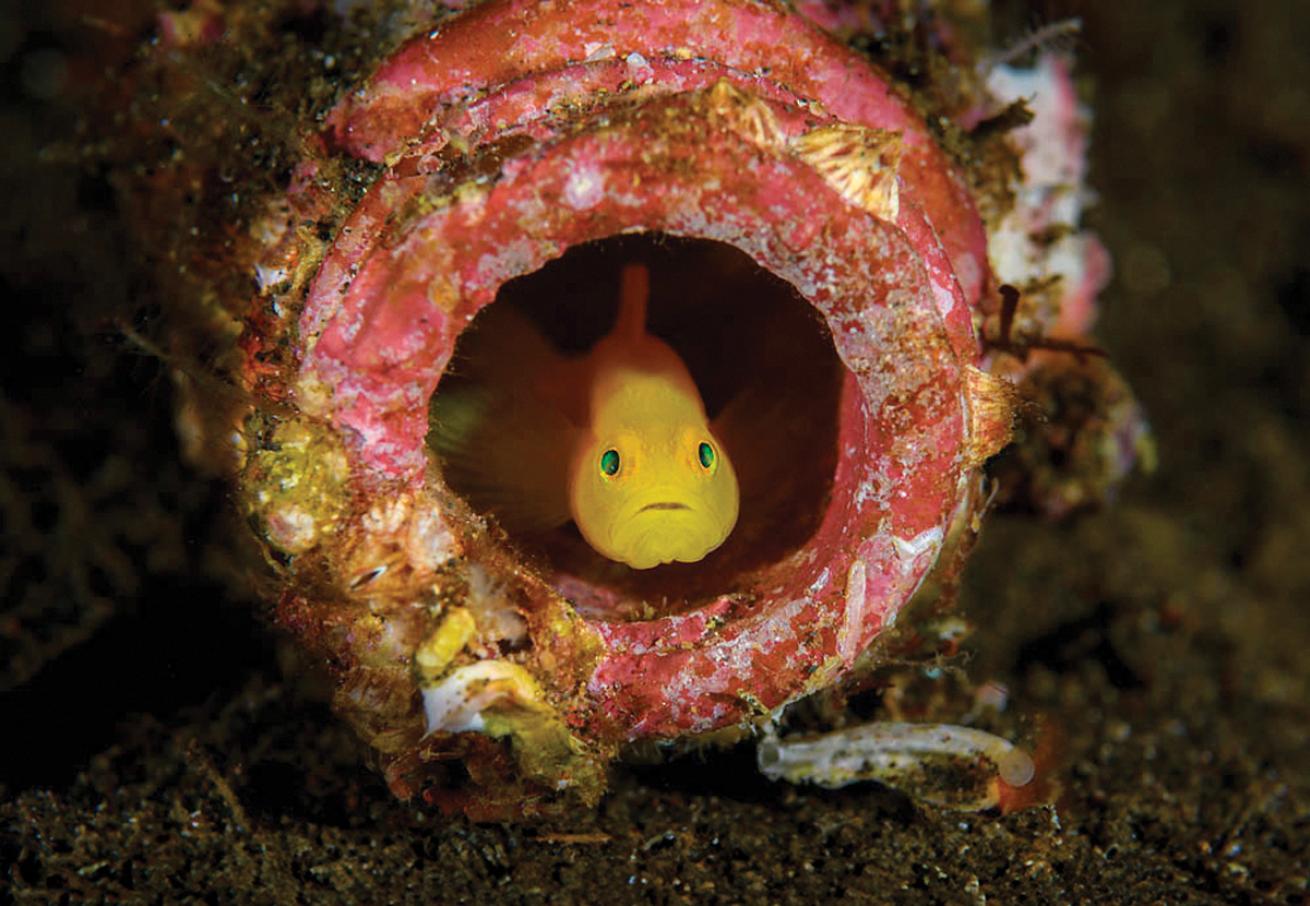
Brandon ColeYellow pygmy goby, Japan.
Japan delivers a few note worthy finds, including the Amami Islands’ pufferfish, which makes circles in the sand to attract a mate, and endless nudibranchs.

